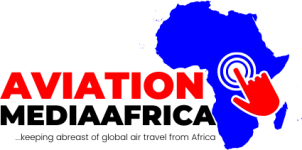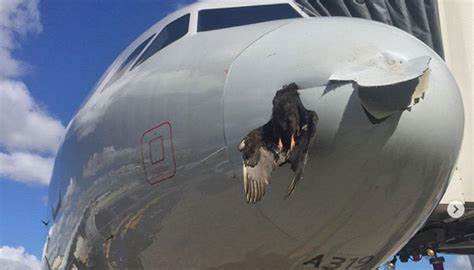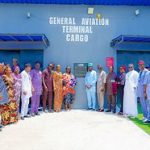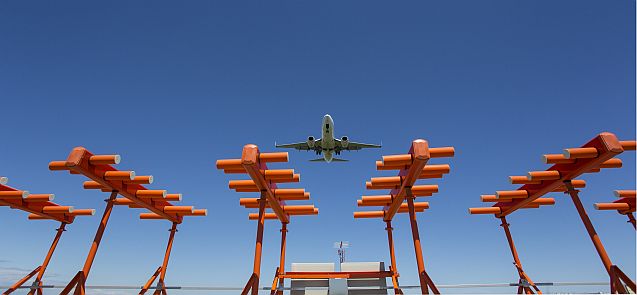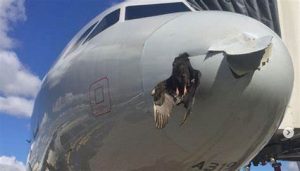
Airline operators are worried about the persistent bird strike in the aviation air space, which has become a major challenge affecting their operations and exposing aircraft to safety threat.
Bird strike occurs when birds collide with aircraft in the air and cause damages to the aircraft, as the aircraft engines tend to suck the birds in.
Airline operators in Nigeria said they have spent a lot of money repairing the damages caused by bird strike, adding that they are still spending because the challenge persists.
They are worried that bird strike has continued to disrupt flights, cause flight delays and sometimes flight cancellations.
The Managing Director and CEO of Aero Contractors, Captain Ado Sanusi, who spoke to THISDAY on the issue, said bird strike happens everywhere in the world and recalled the major accident involving US Airways Flight 1549, when the aircraft, Airbus A320, suffered bird strike when a flock of geese entered the aircraft engines and incapacitated them and the pilot, Captain Chesley Sullenberger ditched the aircraft in Hudson River in New York. That was on January 15, 2009.
He said although bird strike had been a global phenomenon on flight operations but he explained that bird strike incidents could be minimised by concerned authorities. According to him, in the case of Nigeria, it is the Federal Airports Authority of Nigeria (FAAN), which manages about 26 airports in the country, that should be responsible for addressing the issue of bird strike in the Nigerian aviation air space.
Sanusi said bird strike has had negative impact on flight operations and engines of airplanes, adding that it happens most often when the aircraft is taking off or landing and rarely happened at cruise level because the aircraft is usually very high in the air.
“When the aircraft engines suck in the bird, it damages a lot of things, depending on the engine, the level of strike and the penetration of the bird inside the engine.
“Bird strike can damage all the blades of an engine and destroys it. An engine can cost up to $15 million, but depending on the engine. Bird strike can bend some blades in the engine and activate the sensor switch in the aircraft that will put the aircraft in the parking mood, forcing the pilot to land the aircraft because of the signal sent out by the damaged sensor,” Sanusi explained.
He further said the air remained a natural habitat for birds; so, aircraft operate
in bird environment; therefore, it will not be possible to eliminate birds; rather, their impact on flying aircraft can be minimised, noting that some ways to minimise the presence of birds around the airport is to cut the grass at the airports in the night when birds will not come to eat the worms and other insects exposed and when flights may not be operating.
He also suggested that garbage should not be kept near flight paths because it attracts birds and generally, the airports should be kept clean in order to avert the
birds, remarking that FAAN is working to control the birds.
Bird strike regularly disrupts flights in Nigeria’s airspace and together with weather, which is also a natural phenomenon, contribute significantly in-flight delays and cancellation but beyond weather, bird strike often leads the airline to spend a lot of money when a bird strike damages aircraft engine or body. Bird strike rarely happens without damage to the aircraft.
During a recent workshop, the Nigeria Civil Aviation Authority (NCAA) spoke on issues concerning bird strike. In the presentation made by the Director, Aerodrome and Airspace Standards (DAAS), Godwin Balang, the agency said, based on data gathered and analysed in January 2024, the four top aerodromes worst hit by bird strikes, from highest to lowest include airports in Lagos, Port Harcourt, Owerri and
Uyo.
Also, in 2025 the highest number recorded per day at one airport is four bird strikes at the Murtala Muhammed International Airport (MMIA), Lagos, at the Runway 18R, known as the international runway.
According to Balang, this is a major concern to NCAA and that is why the regulator identified it as key area of enhancement in 2024 and 2025 by the NCAA management. He listed the action being taken by NCAA to minimise bird strike in the airspace and this include deployment of safety oversight system.
“The new Nigeria Civil Aviation Regulation (Nig.CARs 2023) Part 12 Vol. I and II specify regulations that require aerodrome operators to establish a system to reduce the risk of wildlife collision with aircraft. An effective wildlife hazard management plan (WHMP) is part of that system required by Nig. CARs 12.2.9.4. (The requirements in the Nig. CARs are derived from ICAO (International Civil Aviation Organisation) Annex 14 and several other ICAO documents dealing with the subject most especially the ICAO Airport Services Manual Doc. 9137
“The Directorate of Aerodrome and Airspace Standards (DAAS)is the technical
Directorate designated by the DGCA to deal with the subject matter. Under DAAS the DGCA (Director General, NCAA) Captain Chris Najomo, recently established the Department of Aerodrome Safety. One of the units under this department is called Wildlife Unit specifically responsible for overseeing aerodrome operators as relates to wildlife management,” he said.
Balang also disclosed that there was a major focus by DAAS on wildlife training in
2024/2025 training programme for inspectors.
“A very large number of NCAA Inspectors have just completed a five-day intensive training workshop in Ilorin on WHMP. This workshop was strategic aimed at equipping our inspectors with required knowledge and skills to address the concern of bird strikes in the country. Also, the DGCA in 2024 approved three NCAA inspectors to attend a hands-on training on birds and wildlife management at Missouri University USA, which included field trips to major airports in the USA for real experience,” he said.
According to NCAA, it is also providing technical guidance materials for the inspectors with respect to the subject, noting that this is currently being enhanced and restructured to reflect the new organisational chart of aerodrome safety department that contains enhanced processes for oversight of aerodrome operators on the subject matter, adding that NCAA has also published advisory circular NCAA-AC-ARD-036 that provide guidance to Aerodrome operators on the subject.
“We have identified the need to update and approve the WHMP for most of the aerodromes. Quite a number of meetings have been taking place between the NCAA and FAAN specifically on the WHMP. The updated version of the WHMP for MMA has recently been submitted to the NCAA by FAAN for review and approval. Same will apply to the rest of aerodromes including the domestic ones under the operational permit approval process that has been initiated by the NCAA,” the agency said.
FAAN recently stated that it has been making efforts at keeping birds away from the airports. Through its wildlife control department, FAAN said it adopted four major control strategies available to solve wildlife problems at the airports which include aircraft flight schedule modification, habitat modification and exclusion, repellent and harassment techniques and wildlife removal.
“These control strategies are as a result of rigorous scientific studies and are therefore implemented technically. None of the methods provide a silver bullet to tackling bird strikes and are therefore deployed collectively as it is done globally.
Also, the collective deployment of all the methods, cannot and will not, totally eliminate bird strikes. However, when deployed scientifically with well trained personnel, the methods can minimize or alleviate the bird strike phenomenon,” the agency further said.
